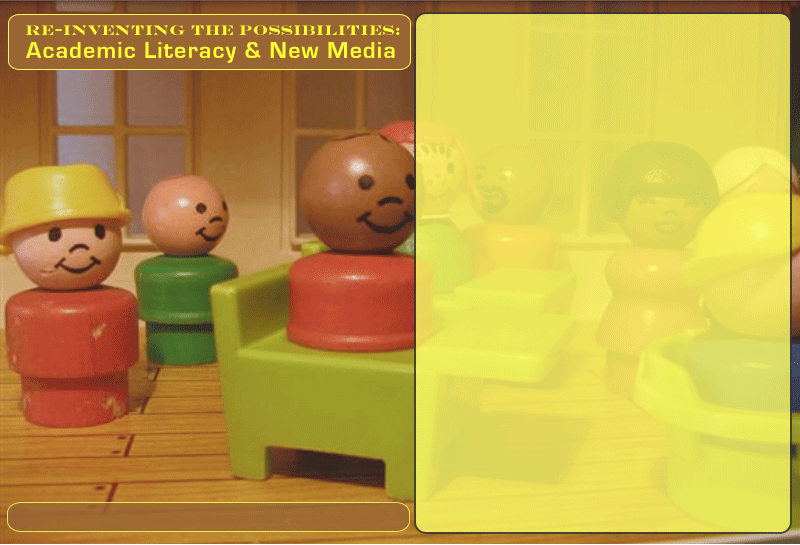
In relation to new media texts, a unified interpretation of design elements acts as a commonplace for readers. These commonplaces are textual places where readers can come together and agree about what they see and why they see that particular element in the context that they do. The materiality of new media texts shifts the focus of communication from what was—a speaker delivering a speech to a finite audience—to what is—valuing how visual, audio, gestural, and other non-written modes of design make meaning within a network of audiences who participate in a collective experience of signification. We need terms to reconfigure teaching and learning in new media technologies and to begin to understand the meaning-making processes behind texts that demand that their readers take an active role in shaping how they mean (see, e.g., Wysocki, 2004). We suggest that some examples of commonplaces to discuss the interpretation and reception of new media texts might include the following:
Context: The environment immediately informing and surrounding a text and its reception. In new media texts, the context (both production and reception) should be made evident within various elements in the text.
Reader: A function of positioning: a new media designer will often design for a particular audience while a reader will position herself with and against that design concept when it suits her meaning-making strategy.
Element: The smallest meaning-making unit in a text. These may be images, graphics, words, alphabetic characters, sound effects, etc.
Emotion: The use of aesthetic elements that help the designer connect with readers through pathetic appeals.
Juxtaposition: The intersection of meaning between elements through spatial relationships, sequence, overlay, or comparison.
Proximity: Relationships created by the relative placement of elements within the space of a text. A close proximity may be interpreted as a significant relationship between elements; however, large spaces between elements may be lessened by certain other strategies such as repetition or linking.
In the next sections, each author discusses how topoi and commonplaces operate in student-produced new media compositions.
Go back to the last node.